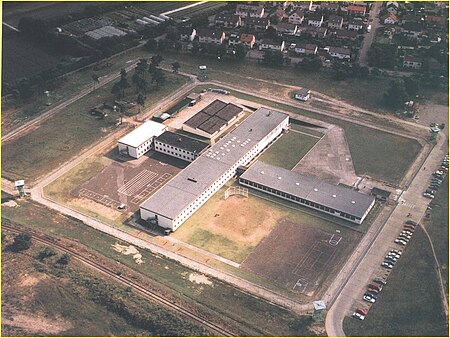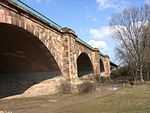United States Army Corrections Facility-Europe
Baden-Württemberg building and structure stubsBuildings and structures in Baden-WürttembergInstallations of the United States ArmyMannheimMilitary installations of the United States in Germany ... and 4 more
Military prisonsPrisons in GermanyUnited States Army Corrections CommandUse American English from May 2014

United States Army Regional Correctional Facility – Europe (USARCF-E) is the only Department of Defense, Level 1 corrections facility in the European and African theaters and is located at Sembach Kaserne, Germany.USACF-E falls up under the 18th MP BDE. At the same time reports directly to the United States Army Corrections Command in Alexandria, Virginia.
Excerpt from the Wikipedia article United States Army Corrections Facility-Europe (License: CC BY-SA 3.0, Authors, Images).United States Army Corrections Facility-Europe
Blumenauer Bruch, Mannheim Sandhofen
Geographical coordinates (GPS) Address External links Nearby Places Show on map
Geographical coordinates (GPS)
| Latitude | Longitude |
|---|---|
| N 49.5638 ° | E 8.47633 ° |
Address
United States Army Corrections Facility-Europe
Blumenauer Bruch
68307 Mannheim, Sandhofen
Baden-Württemberg, Germany
Open on Google Maps







